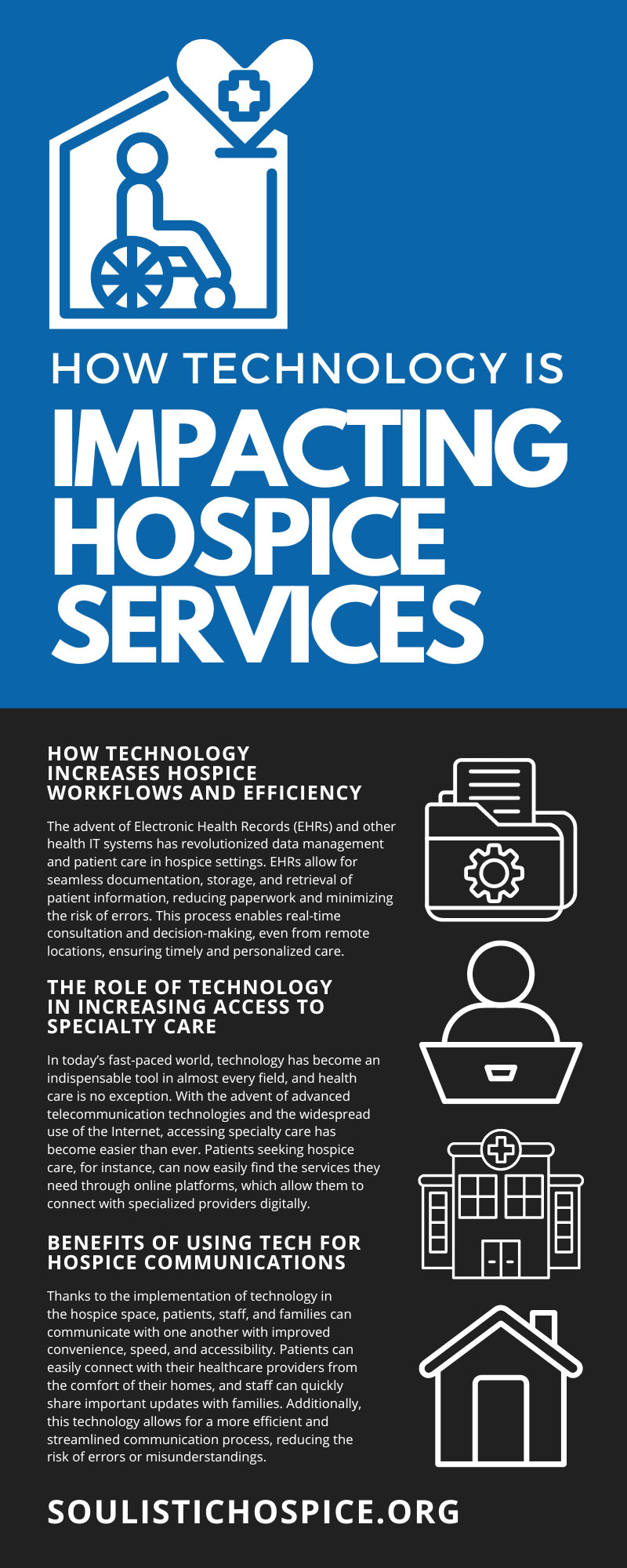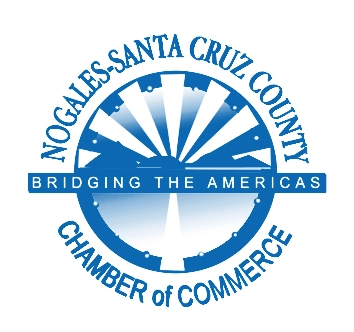
Constant advancements in technology have made unsurprisingly big impacts on hospice services. These changes have caused the health care industry—particularly hospice services—to evolve, from increasing access to care for patients and their families to expanding the range of treatments provided. Let’s explore how technology is impacting hospice services to provide better comfort and relief for those during end-of-life.
Overview of How Technology Is Improving Hospice Services
Hospice services provide compassionate care for individuals who are nearing the end of their lives. With a focus on maintaining comfort and dignity, hospice teams often include nurses, social workers, chaplains, and volunteers. Technology has become an increasingly important tool in improving hospice care in recent years. Technology is helping hospice providers streamline their processes, make more informed decisions, and improve patient outcomes with a myriad of tools, from telemedicine to electronic medical records. As technology continues to advance, so too will the ways in which health-care providers deliver and enhance hospice services.
How Technology Increases Hospice Workflows and Efficiency
Hospice services are experiencing remarkable improvements in workflow and efficiency. Specifically, the advent of Electronic Health Records (EHRs) and other health IT systems has revolutionized data management and patient care in hospice settings. EHRs allow for seamless documentation, storage, and retrieval of patient information, reducing paperwork and minimizing the risk of errors. Meanwhile, telemedicine technologies are streamlining communications among and between multidisciplinary hospice teams and their patients. This process enables real-time consultation and decision-making, even from remote locations, ensuring timely and personalized care. In addition, predictive analytics and machine learning provide valuable insights into patient needs and preferences, enabling proactive care planning. These technology-enabled efficiencies save time and resources and create an environment where caregivers can focus more on the patients, enhancing the quality of their end-of-life care.
The Role of Technology in Increasing Access to Specialty Care
In today’s fast-paced world, technology has become an indispensable tool in almost every field, and health care is no exception. With the advent of advanced telecommunication technologies and the widespread use of the Internet, accessing specialty care has become easier than ever. Patients seeking hospice care, for instance, can now easily find the services they need through online platforms, which allow them to connect with specialized providers digitally. The role of technology has revolutionized the health care industry, making it easier for patients to gain access to quality care, especially in remote areas where specialized providers may not be readily available. As this trend continues, technology will improve how the industry delivers and grants access to quality health care worldwide.
Benefits of Using Tech for Hospice Communications
Technology in hospice care has revolutionized how. Thanks to the implementation of technology in the hospice space, patients, staff, and families can communicate with one another with improved convenience, speed, and accessibility. Patients can easily connect with their healthcare providers from the comfort of their homes, and staff can quickly share important updates with families. Additionally, this technology allows for a more efficient and streamlined communication process, reducing the risk of errors or misunderstandings. By incorporating technology into hospice care, patients receive personalized, high-quality care, and families can feel more involved in the caregiving process. Overall, the use of technology facilitates better communication between patients, staff, and families, improving the quality of hospice services provided today.
Discussing the Use of Virtual Reality in Hospice
Hospice care is an incredibly important aspect of healthcare—it provides support and comfort to those facing the end of their lives, helping them navigate a difficult time with dignity and compassion. However, providing hospice care can be emotionally challenging, requiring a high skill level and training to ensure patients receive the best possible care. That’s where virtual reality comes in—by using this technology to simulate real-life situations, hospice staff can receive training that is as close to the real thing as possible, allowing them to develop the skills they need to provide better care to patients. This tool is just one of the ways in which technological advances are revolutionizing the health care industry, and it’s a development that promises to make a real difference in the lives of both patients and those who care for them.
Exploring the Use of Telehealth in Hospice
As the health care industry evolves, technology has become an increasingly important tool for improving patient care. In particular, telehealth has emerged as a way to monitor hospice patients remotely, reducing the need for in-person visits and the associated costs. By using telehealth technology, healthcare professionals can remotely monitor vital signs and communicate with patients, ensuring they receive the care they need while also helping to ease the burdens associated with hospice care. As this technology continues to develop, it holds the potential to revolutionize the way the industry provides hospice care services, improving patient outcomes and reducing costs for them and their families.
How Digital Medical Records Streamline Care Plans
Digital medical records have revolutionized the way hospice services deliver them, making patient care more convenient and efficient than ever before. With online records accessible to providers and physicians within seconds, it’s now much easier to manage complex medical information and maintain accurate patient records. By improving transparency between health-care providers and patients, digital medical records streamline communication and help providers coordinate optimal care plans that meet their patient’s needs. Thanks to digital medical records, hospice care providers can offer better, more comprehensive care, ensuring their patients receive the care they need when they need it.
Now that you know the ways that technology is improving hospice care services, you can better understand how tech is making leaps and bounds for hospice patients and their families. From electronic medical records to improved communication and coordination of services, technology has transformed how modern hospice care functions. The added benefits of these advancements come with an improved quality of life for patients and families during such trying times. It is evident that technology has become an integral part of hospice care; its impact expanding far beyond what was previously imagined just a few years ago. Consider the compassionate care we provide at Soulistic Hospice if you or a loved one seek in-home care services in the Tucson area. With our team’s combined expertise and technological support, we work diligently to ensure our patients receive optimum comfort every day.









